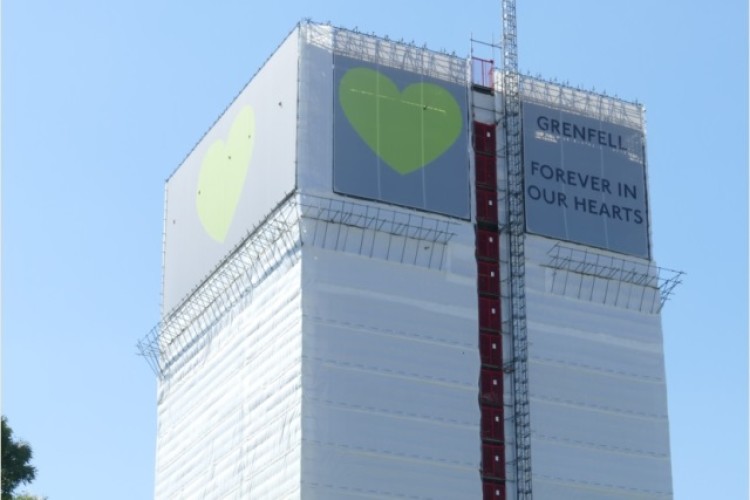Luke Bisby, a professor of fire and structures at Edinburgh University, is an expert witness to the official Grenfell Tower Inquiry. His testimony, available online via www.grenfelltowerinquiry.org.uk, sets out the details of previous cladding fires, and how recommendations for reform came to be ignored or forgotten by government authorities obsessed by deregulation.
He says that one of the clear factors was the 1997 privatisation of the Building Research Establishment (BRE) by Michael Heseltine and its increasing commercialisation in the run up to privatisation.
Prof Bisby write: “During the investigations that followed the Knowsley Heights fire (1991 ), the emphasis appears to have been on how to enable the use of combustible materials and products - rather than on restricting their use in light of what had occurred. In the early 1990s, needing to show its value to government and with the threat of privatisation hanging over it, I believe that BRE had a significant organisational incentive to enable overcladding solutions whilst being seen to mitigate their fire risks - rather than to prohibit their use. This led eventually to the BS 8414 test methods and BR 135 classification document, along with the revenue streams associated with performing BS 8414 tests and assessing cladding systems' abilities to meet the requirements of BR 135 (either by test or by desktop study).
“Following the Knowsley Heights fire, the national reaction-to-fire classification system leading to the Class 0 material and product classification, which had been developed based on a reference scenario linked to growth of a fire within a compartment, rather than on the outside of a building, remained unchanged.
“Rather than addressing the fundamental hazards presented by the combustible (but Class 0) rainscreen cladding at Knowsley Heights, focus was instead placed on recommendations for cavity barriers. This focus enabled the continued use of combustible rain screen cladding.
“After Garnock Court (1999), when the select committee inquiry had recommended the replacement of small scale tests with a large scale test, government opted instead to modify the rules on insulation, but to also offer large scale testing (via BS 8414 and BR 135) as an alternative, effectively to enable continued (indeed increased) use of combustible insulation in external walls at height.
“Thus, the status quo remained largely unaffected – albeit with (in principle) a new regulatory hurdle in place for some materials and products that partially addressed parliament's recommendations. However, this also created a new ‘route to compliance’ that – with hindsight – was plagued with pitfalls and the potential for gaming, misunderstanding, misuse, and misapplication.”


He goes on: “During the period 1984 through to 2017, the independence and rigor of building control activities was continuously eroded due to changes resulting from the introduction of privatised building control via approved inspectors. A culture shift in building control had gradually occurred, from one of building control actors ‘policing’ developers to one of them ‘working with clients’ under commercial duress. This resulted in a ‘race to the bottom’ in the resulting practices within the construction industry.”
The Fire Brigades Union (FBU) termed Prof Bisby’s latest report to the inquiry “massively significant” evidence. National officer Mark Rowe said: “Professor Bisby’s report details multiple failings on the BRE’s part in the run-up to Grenfell, failings which were caused – fundamentally – by private ownership and the increasing encroachment of the private sector. It is massively significant.
“We are clear: the BRE was not, and is not, fit for purpose, because it is privately-owned. It is vital that the BRE is taken back into public ownership and run for the public good, not profit.
“In the run-up to Grenfell their status as a private company meant that they were dependent on fee income from clients, such as Grenfell manufacturers. This made them too willing to please clients and too reluctant to challenge them or the information they provided. The BRE’s private status also meant it did not share information as it should have done, and there were basic failures of competence in vital areas.”
However, the BRE absolves itself of any blame for the collapse of industry regulation. Just like every other actor in this affair, it believes that any blame lies entirely elsewhere. A spokesperson for BRE said: “BRE is owned by a charitable trust, and has been since 2002. BRE was not involved in the testing or classification of the cladding installed on Grenfell Tower at the time of the tragic fire, and there has never been any evidence of a conflict of interest between BRE’s advisory work and the testing and certification services the organisation provides. BRE continues to support the Grenfell Tower Inquiry to ensure that a tragedy such as this can never happen again”.
Got a story? Email news@theconstructionindex.co.uk


.gif)
